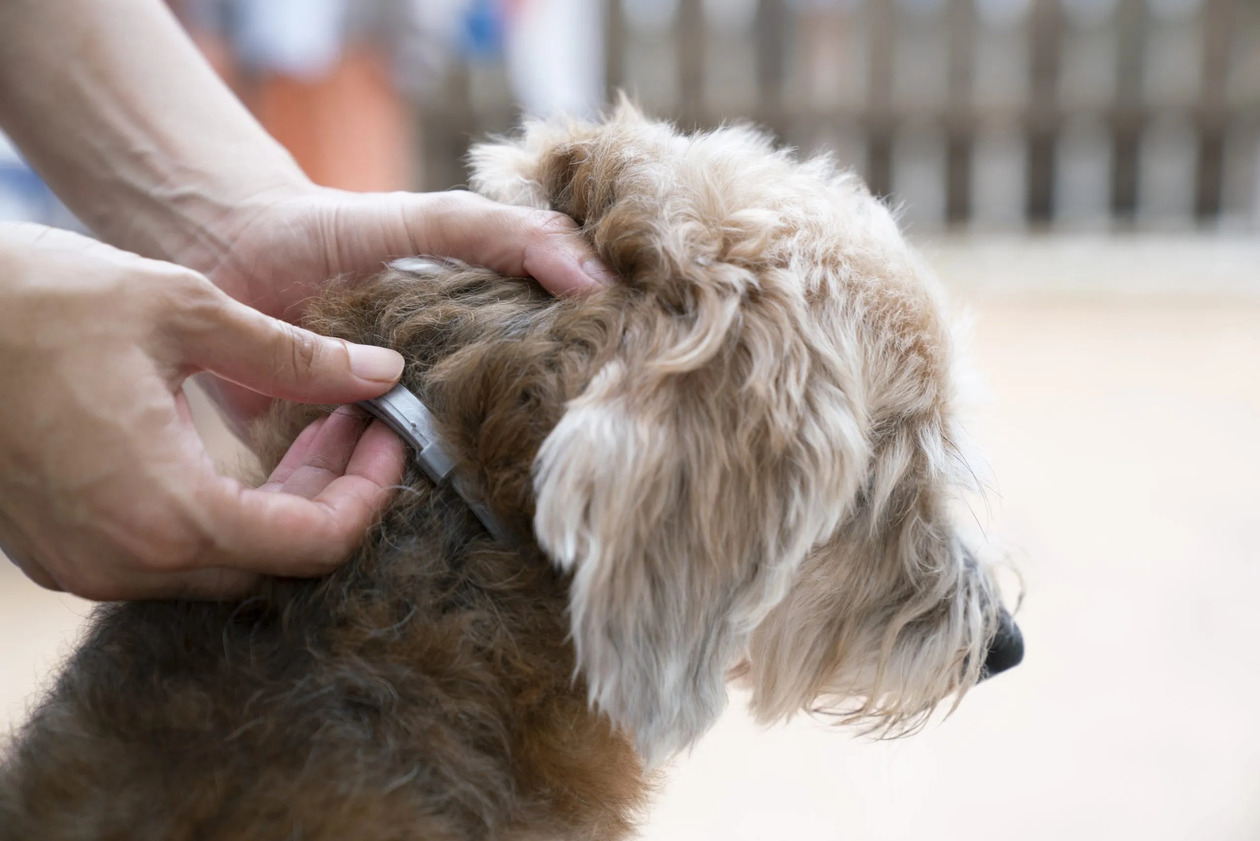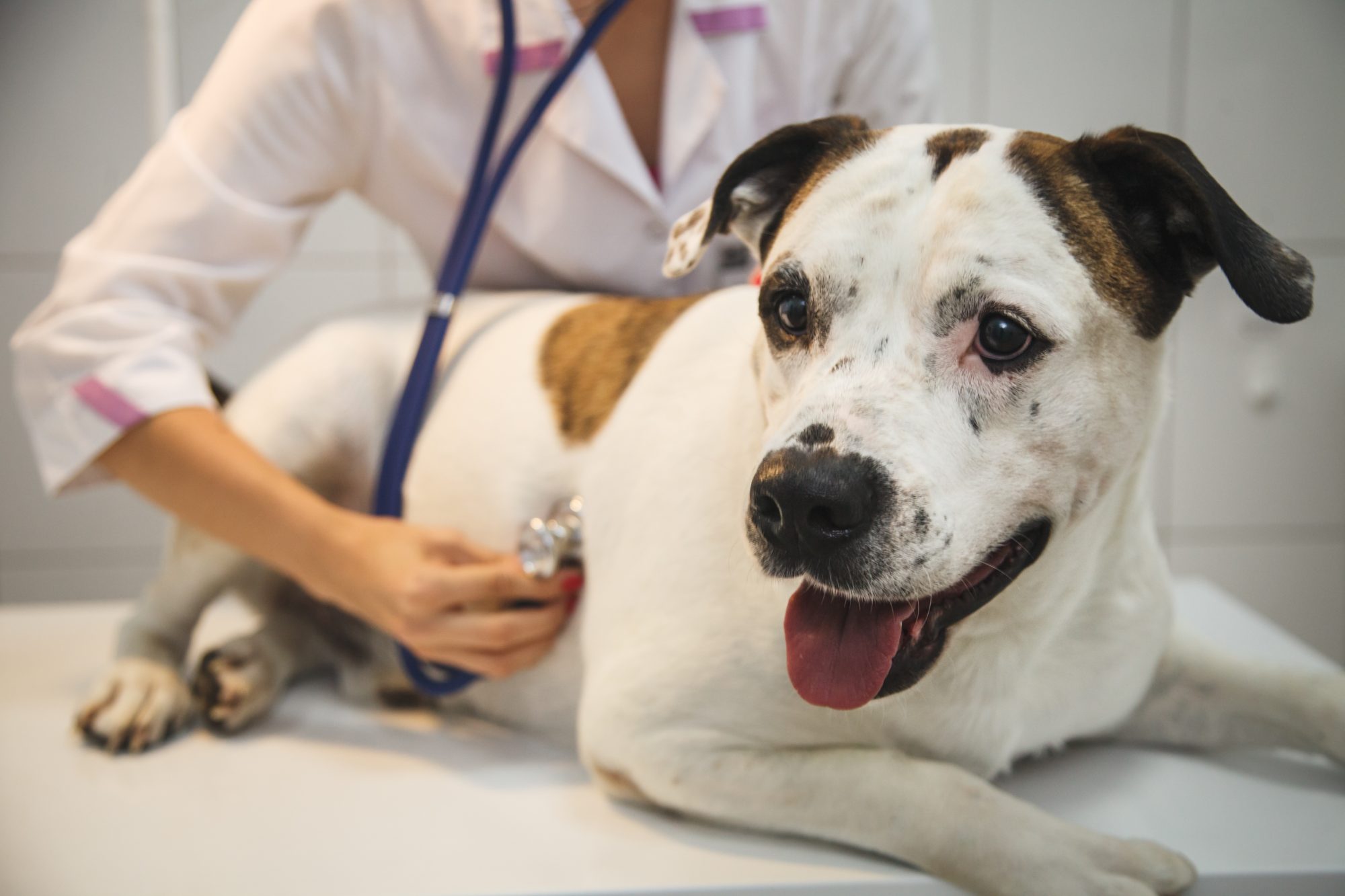Home>Health & Wellness>Common Health Issues>How Long Will A Tick Live On A Dog


Common Health Issues
How Long Will A Tick Live On A Dog
Modified: February 21, 2024
Learn about common health issues for dogs, including how long ticks can live on a dog and how to protect your pet from tick-borne diseases. Keep your dog healthy and happy!
(Many of the links in this article redirect to a specific reviewed product. Your purchase of these products through affiliate links helps to generate commission for Pawsomeoldies.com, at no extra cost. Learn more)
Table of Contents
Introduction
Ticks are tiny, blood-sucking parasites that pose a significant threat to the health and well-being of our canine companions. These pesky creatures are not only a nuisance but also carriers of various diseases, making it crucial for dog owners to understand their life cycle, survival factors, and preventive measures.
Understanding the behavior and life cycle of ticks is essential for protecting our furry friends from potential health risks. By gaining insight into how long ticks can survive on a dog and the factors that influence their longevity, pet owners can take proactive steps to safeguard their pets from these persistent pests.
In this comprehensive guide, we will delve into the intricate world of ticks and explore the various aspects of their existence on dogs. From the stages of their life cycle to the environmental factors that impact their survival, we will unravel the mysteries surrounding these tiny yet formidable adversaries. Additionally, we will discuss practical strategies for preventing ticks from latching onto your dog and offer insights into the safe and effective removal of ticks.
By equipping yourself with the knowledge presented in this article, you will be empowered to protect your canine companion from the potential harm posed by ticks. Let's embark on this enlightening journey to gain a deeper understanding of how to keep our dogs safe from these persistent parasites.
Read more: How Long Can A Dog Live With Skin Cancer
Understanding the life cycle of a tick
Ticks undergo a complex and fascinating life cycle that consists of four distinct stages: egg, larva, nymph, and adult. This intricate process typically spans several months to years, depending on the species of tick and environmental conditions. Understanding the life cycle of ticks is crucial for implementing effective preventive measures and mitigating the risks they pose to dogs and humans alike.
Egg Stage
The life cycle of a tick begins with the egg stage, where adult female ticks lay hundreds to thousands of eggs in their environment. These eggs are often deposited in areas with suitable humidity and vegetation, providing an ideal habitat for the development of tick larvae.
Larval Stage
Once the eggs hatch, they give rise to tiny, six-legged larvae. At this stage, ticks are known as "seed ticks" and are highly active in seeking a host for their first blood meal. Larval ticks typically feed on small mammals or birds, including rodents and ground-dwelling birds. After engorging themselves with blood, the larvae detach from the host and molt into the next stage.
Nymph Stage
Following their first blood meal, the larvae molt into eight-legged nymphs. Nymphs are more developed and larger than larvae, making them more visible to potential hosts. Similar to the larval stage, nymphs actively seek out hosts for their next blood meal, which often includes larger animals such as dogs, deer, and humans. Once engorged, the nymphs detach from the host and molt into adult ticks.
Read more: How Long Does A Dog Live With Cancer
Adult Stage
At the adult stage, ticks are fully developed and capable of reproducing. Adult female ticks require a substantial blood meal to support the development of their eggs, while adult male ticks also feed on blood but do not engorge as extensively as females. After mating, female ticks lay eggs and the life cycle begins anew.
Understanding the life cycle of ticks provides valuable insights into their behavior, feeding patterns, and susceptibility to environmental conditions. By comprehending the various stages of tick development, pet owners can adopt proactive measures to minimize the risk of tick infestations and protect their dogs from potential harm.
In the subsequent sections, we will explore the factors that influence tick survival on dogs and practical strategies for preventing ticks from latching onto your canine companion. Let's delve deeper into the world of ticks and equip ourselves with the knowledge to safeguard our furry friends.
Factors affecting tick survival on a dog
Several factors play a pivotal role in determining the survival of ticks on dogs. Understanding these factors is essential for devising effective strategies to minimize the risk of tick infestations and protect canine companions from potential harm.
-
Environmental Conditions: Ticks thrive in environments with high humidity and abundant vegetation. Moist and densely vegetated areas provide an ideal habitat for ticks to flourish, increasing the likelihood of dogs coming into contact with these parasites. Additionally, temperature and climate significantly impact tick survival, with certain species being more resilient in specific environmental conditions.
-
Host Availability: The presence of suitable hosts, such as mammals and birds, directly influences tick survival. Dogs, along with other animals, serve as primary hosts for ticks, providing them with a readily available source of blood for sustenance. The abundance and accessibility of potential hosts in the vicinity of dogs can significantly impact the prevalence of ticks in a particular area.
-
Grooming and Coat Length: The grooming habits and coat length of dogs can affect the likelihood of ticks latching onto them. Dogs with longer, thicker coats may provide ticks with more opportunities to attach themselves, while regular grooming and maintenance of shorter coats can help minimize the risk of tick infestations.
-
Tick Prevention Measures: The use of preventive products, such as tick collars, spot-on treatments, and oral medications, can greatly influence tick survival on dogs. These products are designed to repel, kill, or inhibit the development of ticks, thereby reducing the likelihood of infestations and enhancing the overall well-being of dogs.
-
Physical Activity and Outdoor Exposure: Dogs that spend a significant amount of time outdoors, especially in wooded or grassy areas, are more susceptible to encountering ticks. Engaging in outdoor activities such as hiking, camping, or simply playing in natural environments increases the likelihood of dogs coming into contact with ticks, thereby affecting tick survival on their bodies.
By considering these factors, pet owners can proactively address the risk of tick infestations and implement preventive measures to safeguard their dogs. The next section will delve into practical strategies for preventing ticks from latching onto canine companions, providing valuable insights for maintaining the health and well-being of beloved pets.
How to prevent ticks from latching onto your dog
Preventing ticks from latching onto your dog is a crucial aspect of maintaining their overall health and well-being. By implementing proactive measures and incorporating preventive strategies, pet owners can significantly reduce the risk of tick infestations and protect their canine companions from potential harm. Here are practical and effective ways to prevent ticks from latching onto your dog:
-
Use Tick Prevention Products: Utilize tick prevention products specifically designed for dogs, such as spot-on treatments, tick collars, and oral medications. These products are formulated to repel, kill, or inhibit the development of ticks, providing a layer of protection for your dog.
-
Regularly Inspect Your Dog: Conduct thorough tick checks on your dog after outdoor activities, particularly in areas with dense vegetation. Pay close attention to areas where ticks are commonly found, including the ears, neck, and between the toes. Promptly removing any attached ticks can prevent potential infestations.
-
Maintain a Tick-Free Environment: Keep your living spaces and outdoor areas well-maintained to minimize tick habitats. Regularly mow the lawn, trim bushes and shrubs, and remove leaf litter to reduce the presence of ticks in your immediate surroundings.
-
Consider Vaccination: Inquire with your veterinarian about tick-borne disease vaccinations for your dog. Vaccines can provide an additional layer of protection against specific tick-borne illnesses, bolstering your dog's immune system against potential threats.
-
Limit Outdoor Exposure in High-Risk Areas: Be mindful of the environments where ticks are prevalent, such as wooded areas and tall grass. Limit your dog's exposure to these high-risk areas, especially during peak tick seasons, to reduce the likelihood of encountering ticks.
-
Utilize Tick Deterrents: Explore natural tick deterrents, such as essential oils and herbal sprays, to help repel ticks from your dog. While these methods may offer supplementary protection, it's essential to consult with your veterinarian to ensure their safety and efficacy.
-
Consult with a Veterinarian: Seek guidance from a veterinarian regarding the most suitable tick prevention measures for your dog. Veterinarians can recommend personalized preventive strategies based on your dog's specific needs and the prevalent tick species in your area.
By incorporating these preventive measures into your dog care routine, you can create a safer and more secure environment for your canine companion, minimizing the risk of tick infestations and promoting their overall well-being. Taking proactive steps to prevent ticks from latching onto your dog is an essential aspect of responsible pet ownership, ensuring that your beloved companion can enjoy a healthy and fulfilling life free from the threats posed by these persistent parasites.
Removing ticks from your dog
When it comes to safeguarding your dog's health, prompt and proper tick removal is essential. If you discover a tick attached to your dog, it's crucial to address the situation with care and precision. Here's a detailed guide on how to safely remove ticks from your dog:
Read more: How Long Will A Dog Live With Heartworm?
Step 1: Gather the Necessary Tools
Before initiating the tick removal process, gather the essential tools, including fine-tipped tweezers or a specialized tick removal tool, gloves, rubbing alcohol, and antiseptic ointment. Having these items readily available will streamline the removal procedure and minimize the risk of complications.
Step 2: Prepare the Area
Choose a well-lit and comfortable area to perform the tick removal. Ensure that both you and your dog are in a relaxed state to minimize stress and facilitate a smooth process. If your dog is anxious, consider enlisting the assistance of another person to gently hold and soothe them during the procedure.
Step 3: Engage with Caution
Wearing gloves, carefully grasp the tick as close to your dog's skin as possible using the tweezers or tick removal tool. Exercise caution to avoid squeezing the tick's body, as this may cause it to regurgitate potentially infectious fluids into your dog's bloodstream.
Step 4: Remove the Tick
With a steady hand, gently pull the tick straight out, applying a firm and even pressure. Avoid twisting or jerking motions, as these actions can cause the tick's mouthparts to break off and remain embedded in the skin. Ensure that the entire tick, including its mouthparts, is extracted from your dog's skin.
Read more: How Long Can A Dog Live With Arthritis
Step 5: Disinfect and Monitor
After removing the tick, disinfect the bite area on your dog's skin with rubbing alcohol and apply a small amount of antiseptic ointment to promote healing. Thoroughly clean the tweezers or tick removal tool with rubbing alcohol to prevent the potential spread of tick-borne pathogens.
Step 6: Monitor for Symptoms
Monitor your dog for any signs of discomfort, irritation, or unusual symptoms following the tick removal. If you notice any concerning changes in your dog's behavior or health, promptly seek guidance from a veterinarian to ensure proper evaluation and care.
By following these steps and exercising diligence, you can effectively remove ticks from your dog and mitigate the associated risks. Remember that timely tick removal is crucial for preventing potential tick-borne diseases and promoting the well-being of your beloved canine companion.
Conclusion
In conclusion, understanding the intricacies of tick survival on dogs and implementing proactive measures to prevent tick infestations are essential components of responsible pet ownership. By gaining insights into the life cycle of ticks, the factors influencing their survival on dogs, and practical strategies for prevention and removal, pet owners can effectively safeguard their canine companions from the potential harm posed by these persistent parasites.
The life cycle of ticks, encompassing the egg, larval, nymph, and adult stages, provides a comprehensive understanding of their development and feeding patterns. This knowledge empowers pet owners to anticipate and address potential infestations, thereby protecting their dogs from the risks associated with tick-borne diseases.
Factors such as environmental conditions, host availability, grooming habits, tick prevention measures, and outdoor exposure significantly impact tick survival on dogs. By considering these factors, pet owners can tailor their preventive strategies to create a safer environment for their dogs, minimizing the likelihood of tick encounters and infestations.
Implementing preventive measures, such as utilizing tick prevention products, conducting regular tick checks, maintaining tick-free environments, considering vaccination, and limiting outdoor exposure in high-risk areas, plays a pivotal role in mitigating the risk of tick infestations. These proactive steps contribute to the overall well-being of dogs and reduce the potential impact of tick-borne illnesses.
Furthermore, the safe and proper removal of ticks from dogs is crucial for preventing the transmission of tick-borne pathogens and minimizing the associated health risks. By following established guidelines for tick removal and post-removal care, pet owners can effectively address tick encounters and protect their dogs from potential complications.
In essence, the comprehensive understanding of tick survival, coupled with the proactive implementation of preventive measures and safe removal practices, empowers pet owners to create a safer and healthier environment for their canine companions. By prioritizing tick prevention and management, pet owners can ensure that their beloved dogs can enjoy a vibrant and fulfilling life, free from the threats posed by ticks and tick-borne diseases.












